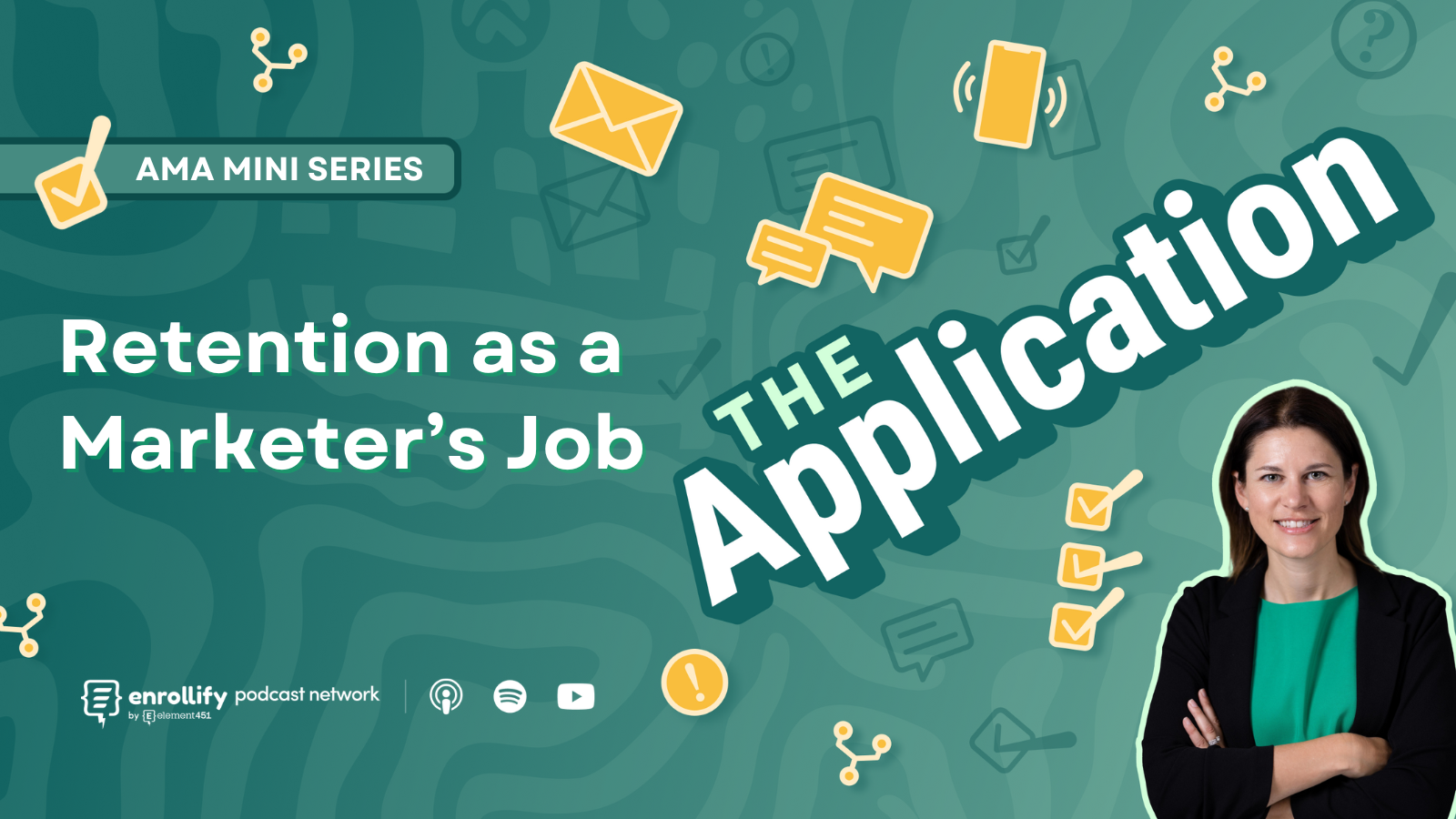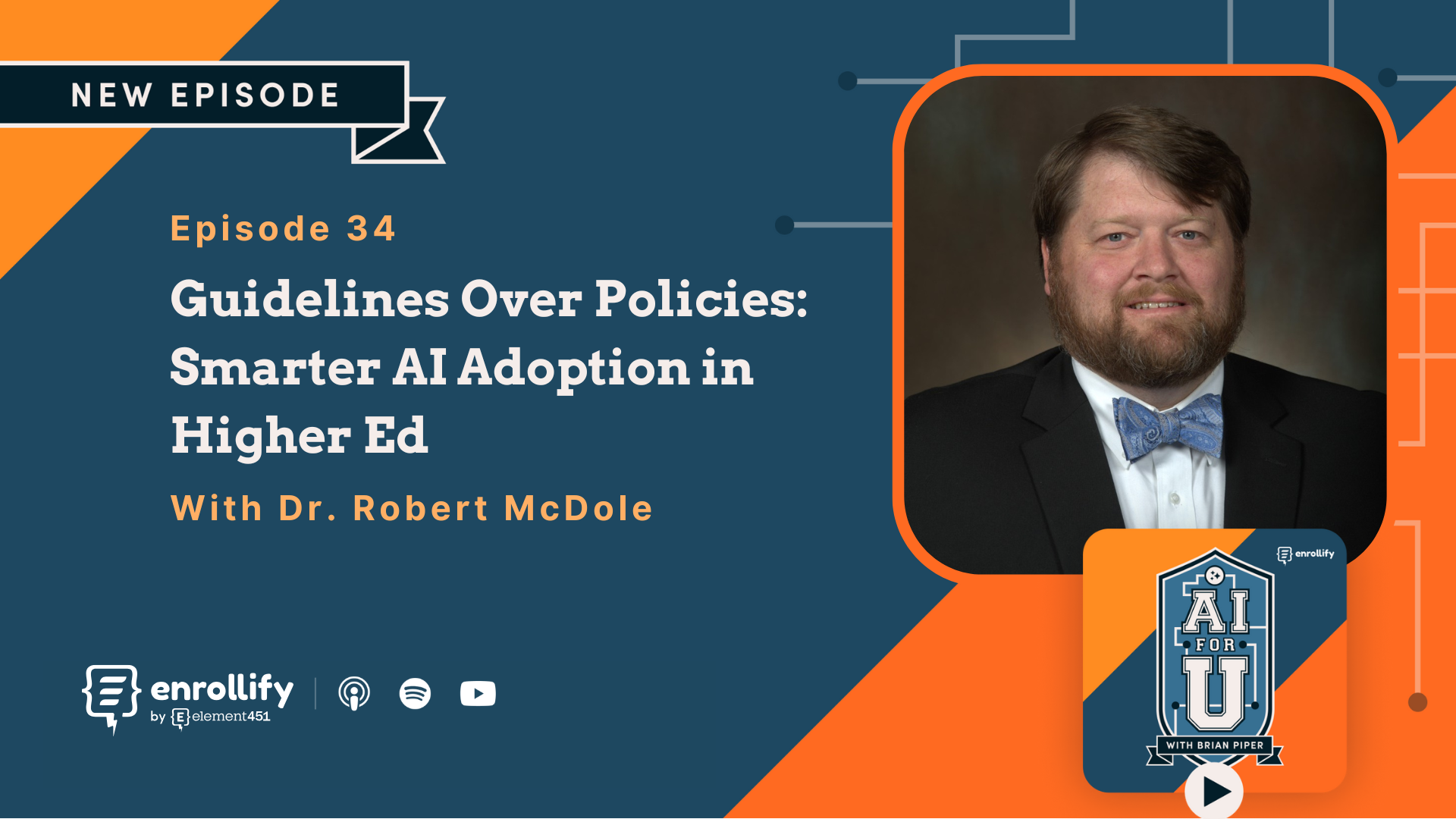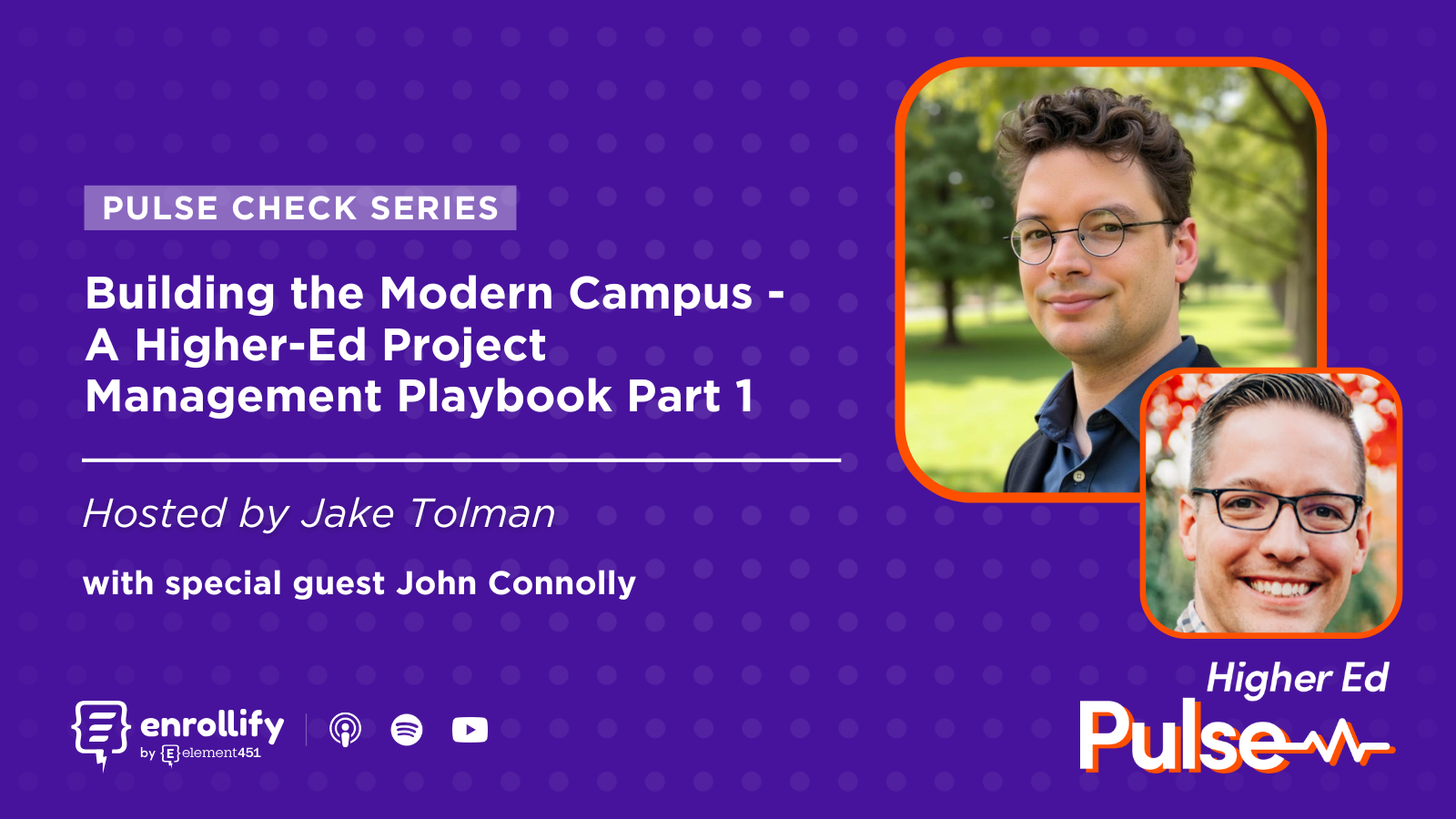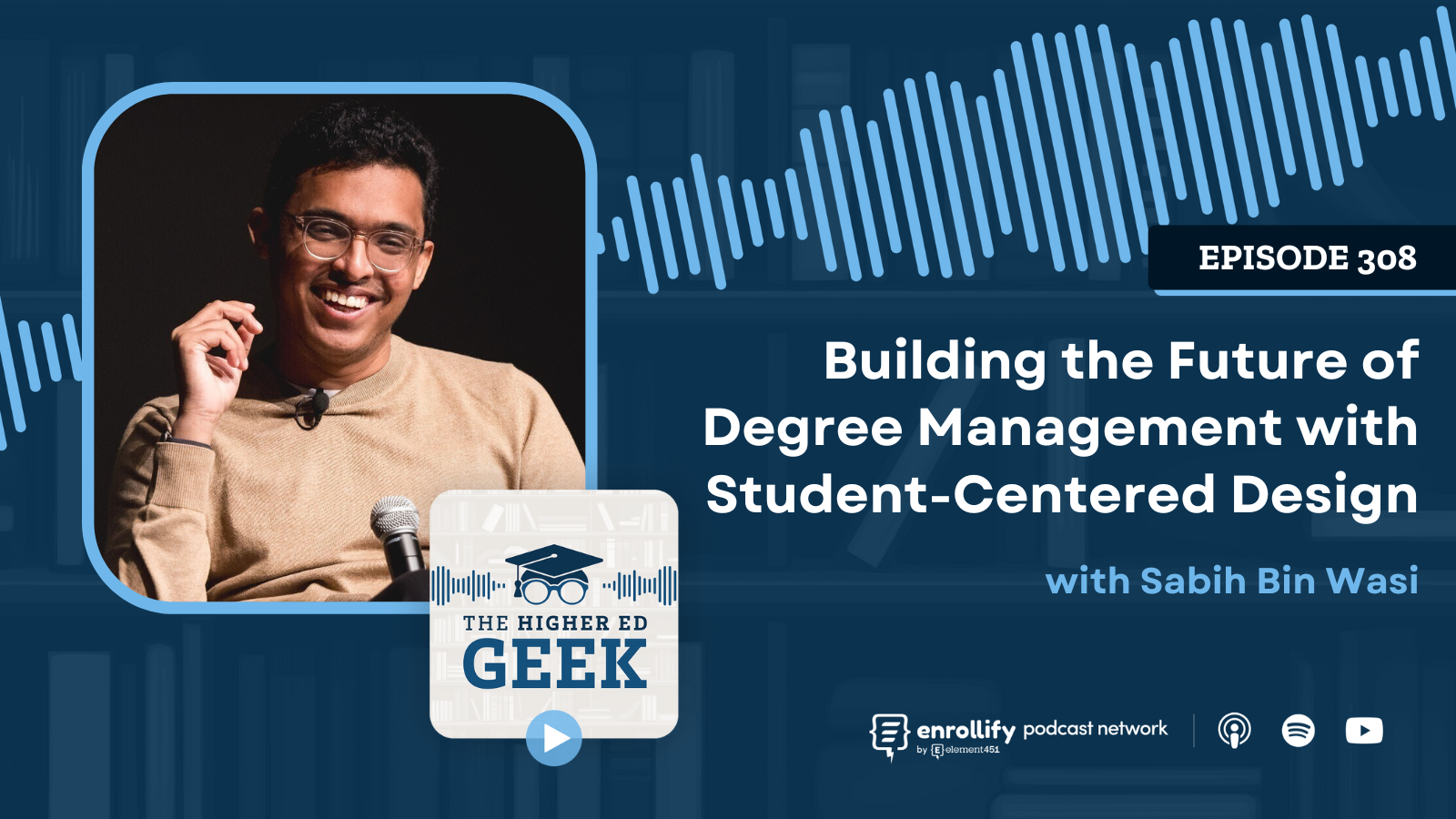About the Episode
Got a story to tell? An innovative idea to share? Fill out our guest nomination form and let's chat!
About The Episode:
How can you bring AI into your work without overwhelming your team — or yourself? In this episode, Isaac Williams, Director of Multimedia and Digital Strategy at Daemen University, shares how Daemen is using AI to bridge resource gaps, streamline data analysis, and build campus-wide momentum from the admissions office to leadership. Isaac walks us through his practical approach to integrating AI tools: starting small, identifying pain points, and building internal champions to drive adoption. His insight teaches us that AI won’t replace you — it’ll make you better.
Join us as we discuss:
- [4:45] How to prep data and protect privacy with AI tools
- [14:20] Where to begin: a pen, a whiteboard, and one good use case
- [20:17] Building allies and managing up to grow support
Check out these resources we mentioned during the podcast:
- Ariadna Jacob Instagram
To hear this interview and many more like it, subscribe on Apple Podcasts, Spotify, or our website, or search for AI for U with Brian Piper in your favorite podcast player.
Episode Summary
How is Daemen University using AI in enrollment marketing?
Isaac Williams walks us through his tactical use of AI to manage regional ad budgets and improve the efficiency of student recruitment efforts. With a small team and a finite budget, Isaac leans heavily on AI-powered data analytics in higher education to pinpoint which geographic areas generate the most applications and deposits. Tools like ChatGPT help him synthesize queries pulled from Daemen’s Slate CRM—minus any personally identifiable information—to spot trends and optimize ad spend. This data-first, AI-supported approach is saving his team valuable hours and ensuring their efforts are targeted and effective.
How does Isaac ensure ethical AI usage and protect student data?
Isaac emphasizes the importance of de-identifying data before uploading it into any AI tool. By removing names, phone numbers, and addresses, and using numeric placeholders, he ensures compliance with privacy standards and keeps sensitive information secure. The prep work involved may take time, but it’s significantly faster than manually analyzing rows of data. He likens it to food service prep: necessary, methodical, and the foundation for a smooth workflow. His process highlights a responsible way to incorporate AI in higher education without compromising ethics or security.
What are the biggest cultural challenges of implementing AI in higher ed?
According to Isaac, resistance stems from three main groups on campus: faculty, staff, and students. Faculty often view AI as a threat to academic integrity, especially in fields where hands-on skill is crucial. Long-standing staff may worry about job security or simply feel overwhelmed by change. Students, on the other hand, are eager adopters, especially when AI saves them time. Isaac believes change management is key—sharing success stories, involving leadership, and emphasizing collaboration over replacement helps shift the narrative from fear to empowerment.
How can higher ed professionals get started with AI?
Start with pain points, not platforms. Isaac advises teams to take an old-school approach: write down what’s not working, collaborate to find common bottlenecks, and identify where AI could make a difference. Then, pilot one AI solution and gather feedback. This incremental strategy helps build confidence and avoid burnout. He also stresses that AI should amplify human expertise, not replace it. By identifying time-consuming tasks—like data cleaning or content brainstorming—institutions can achieve quick wins that showcase AI's value.
What AI use cases stood out to Isaac?
One standout case came from a marketing strategist working with TikTok influencer Charli D’Amelio. She used AI to analyze trends, identify top-performing hashtags, generate creative concepts, and even evaluate video drafts—essentially building a full feedback loop for content strategy. Isaac compares this to SEO optimization and sees clear applications in higher ed marketing. Whether you’re tracking funnel performance or building a content calendar, AI’s ability to analyze patterns and suggest next steps makes it an indispensable tool for enrollment marketers.
Where is AI in higher ed headed in the next 1–2 years?
Isaac sees AI becoming faster, smarter, and more seamlessly integrated into everyday systems. While we’re not quite at the Minority Report level of tech yet, the trajectory is clear: reduced prep time, more automation, and embedded AI tools across platforms. As AI continues to evolve, those who embrace it now will be ahead of the curve, while laggards may find themselves outpaced. For small teams especially, AI is not a luxury—it’s a strategic necessity.
Episode prompt:
You are a higher education SEO and content strategy expert. Analyze the content structure, discoverability, and strategic alignment of [insert university name]’s website (main domain: [URL]).
Using publicly available data (such as sitemap structure, indexed pages, site hierarchy, and top-ranking content), and attached data [from Google Analytics, Search Console, SEMrush, etc.], generate a comprehensive content audit with these goals:
Part 1: Content Performance Overview
Identify the top-performing content by search traffic, backlinks, and engagement signals (estimated from titles and visible ranking pages).
Highlight the most linked-to and most shared pages across academic, research, student life, and admissions sections.
Note outdated or underperforming pages that likely have high strategic value (e.g., program pages with low visibility).
Part 2: Content Gap Identification
Compare existing content to user search intent around key themes: [enter your priority themes, maybe: undergraduate and graduate program discovery, faculty expertise and research output, career outcomes and ROI, etc.]
Identify content gaps using People Also Ask, related search queries, and competitor comparisons (e.g., other peer institutions).
Part 3: Strategic Priority Mapping
Map current content to these strategic goals:
[specific goals or link to goals on your site]
Identify missing or underrepresented content that could support those goals.
Part 4: Quick Wins and Long-Term Opportunities
Suggest at least five quick wins (e.g., meta updates, content reorganization, high-impact internal links).
List 5–10 long-term opportunities for pillar content, multimedia storytelling, or SEO-driven campaigns that align with institutional priorities and target the following audiences [enter your key audiences].
Recommend tools, data sources, and AI workflows that could automate and scale future audits for internal teams.
Connect With Our Host:
Brian Piper
https://www.linkedin.com/in/brianwpiper/
About The Enrollify Podcast Network:
AI for U is a part of the Enrollify Podcast Network. If you like this podcast, chances are you’ll like other Enrollify shows too!
Some of our favorites include Generation AI and Mastering the Next.
Enrollify is produced by Element451 — the next-generation AI student engagement platform helping institutions create meaningful and personalized interactions with students. Learn more at element451.com.
Attend the 2025 Engage Summit!
The Engage Summit is the premier conference for forward-thinking leaders and practitioners dedicated to exploring the transformative power of AI in education.
Explore the strategies and tools to step into the next generation of student engagement, supercharged by AI. You'll leave ready to deliver the most personalized digital engagement experience every step of the way.
👉🏻 Register now to secure your spot in Charlotte, NC, on June 24-25, 2025!















